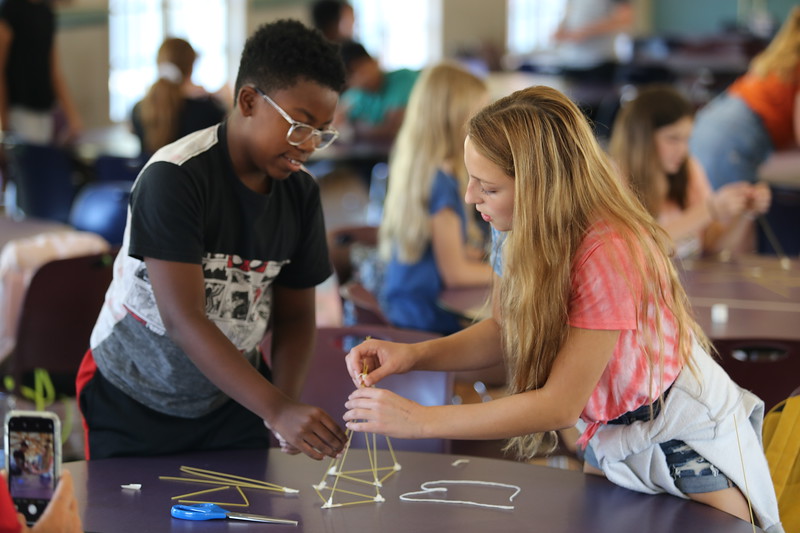- Grace, Daniel, and Leah
This week we went deeper into our climate change unit. Throughout the week students watched movies that showed the negative effects of climate change. We have been examining climate change for a while now, and have been tracking our progress through doing different climate related research and activities each week. This week 3 groups of students were put together and each group watched a different movie Chasing Coral (2017), Before the Flood (2015), or Climate Refugees (2010).
In the movie chasing coral, a group of scientists travel around the world in search of different stages of coral. In their original design, they use cameras that are propped on a device that makes them twist 360 degrees. They placed these cameras in multiple locations to see how coral reacted to different water temperatures. Unfortunately, for the crew, the cameras did not take high quality photos. So, instead of just calling it quits and going home, they decided to take manual photos of the coral from different angles. It took them a long time and it was depressing to see the quantity of coral that was dying and how fast the coral was dying from higher water temperatures. At the end, of the movie, a video message was put in at the end to alert people of what was happening. The research crew asked if people from around the world to document what was happening to coral from their region. Many people helped out and now coral from all of the world is being documented.
Climate Refugees. (Room 204)
Before the Flood is about Leonardo DiCaprio, a famous actor, visiting places to talk to different people, mainly people with power, about climate change. He has met with many inspiring people like Pope Francis and Barack Obama. Since DiCaprio is a movie star many people look up to him and listen to him. He is relatable and has a strong voice. Because of him Obama agreed to sign the Paris Climate Agreement. The Paris Agreement is an agreement between all the countries in the world about climate change and the problems and concerns that it brings. When Obama was president he agreed to it, but now that his term is over President Donald Trump has decided to take us out of the agreement.
Climate refugees is about how refugees are trying to find a new home because the one they once lived at was destroyed. Their homes are being taken away from them because of the disastrous effects of climate change. Places that have the money to help stop this won’t contribute, leading to countries to argue on who will be held responsible of the damage climate change has done to our world. People don’t know what to do with all of the refugees coming to our countries, and some people don’t want them here. Scientist are predicting that we will not have enough food or water for the refugees, and with our population growing every year, we are predicting food scarce will become a world-wide issue. Our world is struggling and the videos in class have taught us that we are responsible for this and it’s our job to try and stop it.
Quest Humanities:
In quest humanities this week, we learned and tested out different note taking skills. The teachers have noticed that most classmates struggle with taking consistent notes or with taking useful notes. Learning multiple note taking skills has helped most students find their own successful way, that works for them best, of taking accurate notes. The note taking styles we discussed and tried out were cornell, annotating, mind mapping, and creating an outline. Each style focuses on a different way to help the student learn their material (such as; studying, research, breaking down large topics, etc) for either an upcoming test, essay, or quiz. We were all assigned to read an article of our choice (out of the choices that were given to us), and to complete all note taking styles. Then, we were to write on the big white board (in one of the classrooms) which note taking style we found the most useful and why we found it practical. From my observations, people seemed to find the outline and the annotating note taking style the most helpful because it kept their work organized and helped them find the information they need on the article they read quick.
In science we watched a movie about alternative energy sources. We also talked about how New Jersey was going to go twenty percent wind power. They were going to put wind turbines on the water, on the coast, to produce electricity. This was going to produce wind energy and wind energy makes electricity. Although this was a great idea, aesthetically people didn’t like it. That’s why this idea was scrapped and New Jersey still uses fifty percent Nuclear power. We also talked about how we can make electrify from the sun. It is a type of nuclear power but with no nuclear waste. There is solar or the sun’s energy. The difference between these two are that solar makes electricity from sunlight and that the sun’s energy is harnessed like nuclear power.
Proofreaders : Tori, Avani, Audrey.
